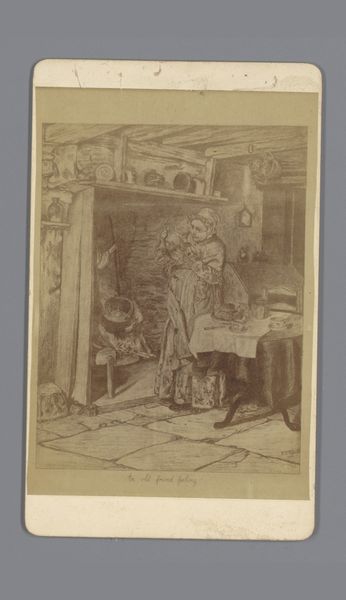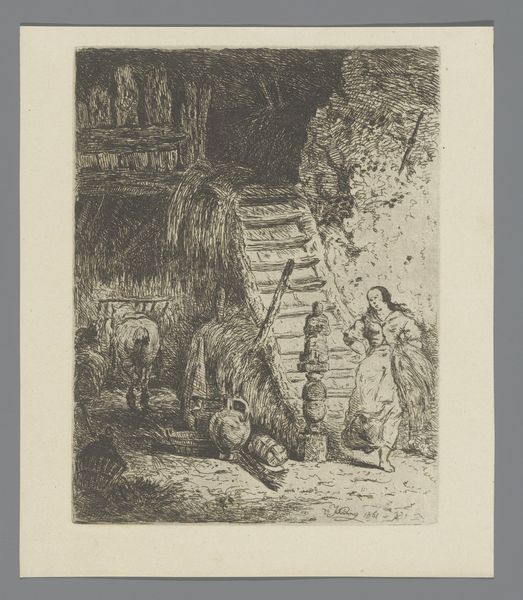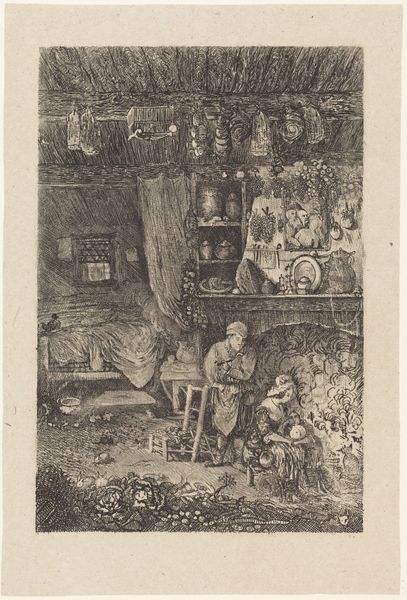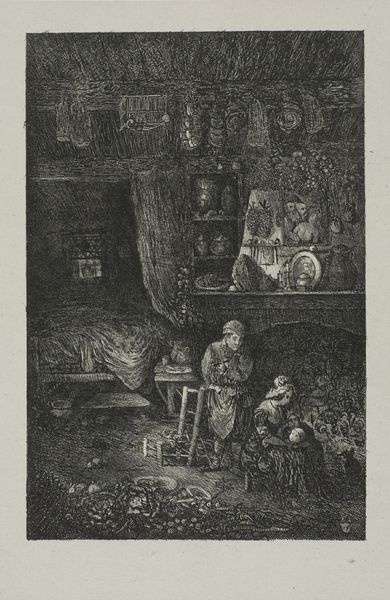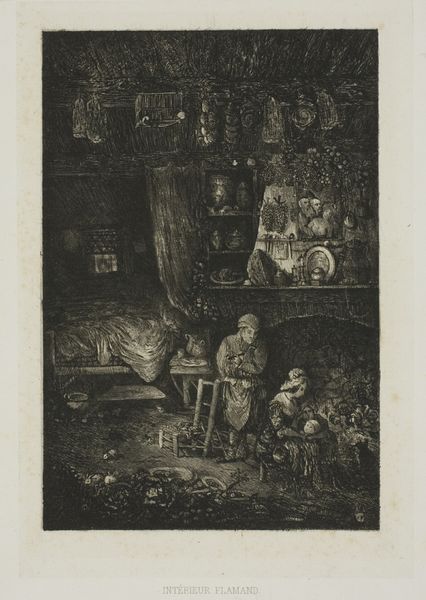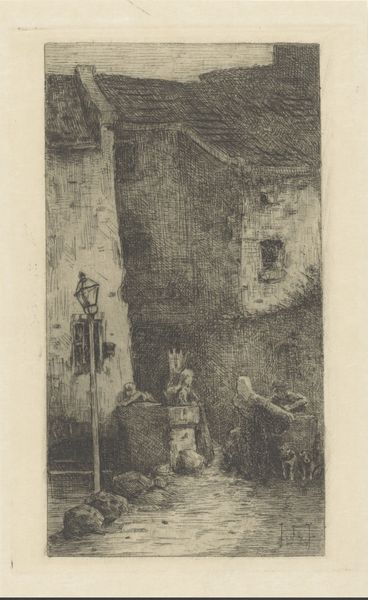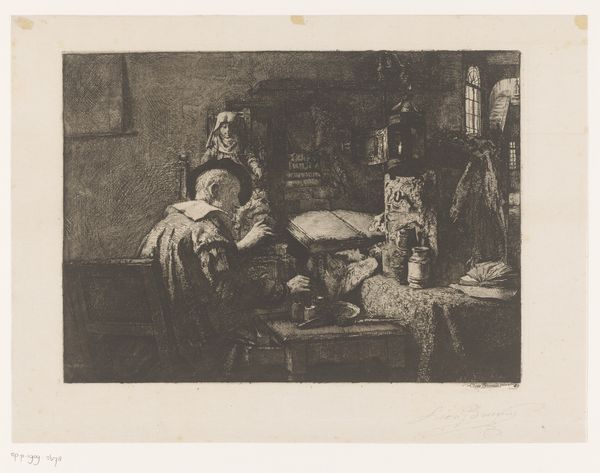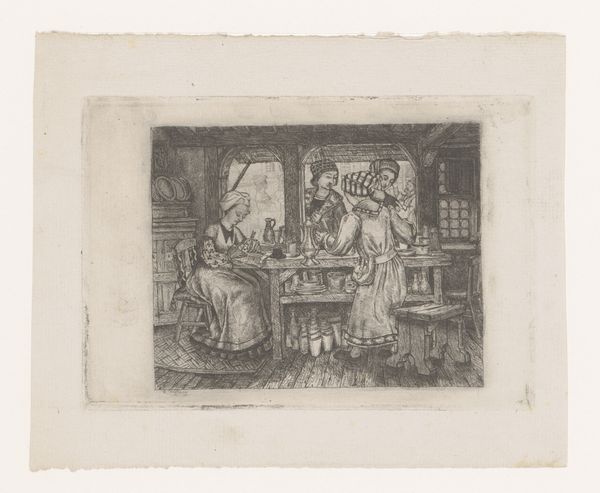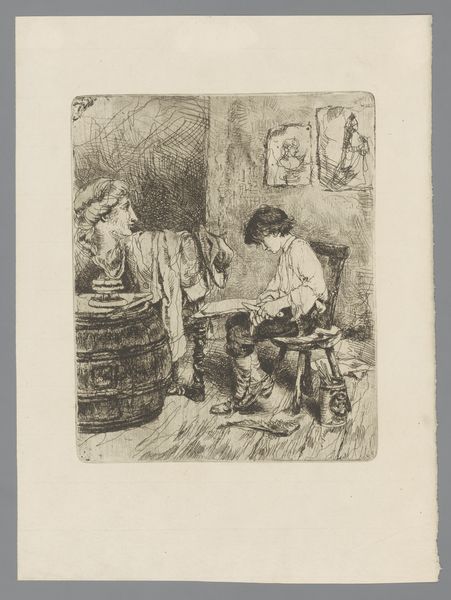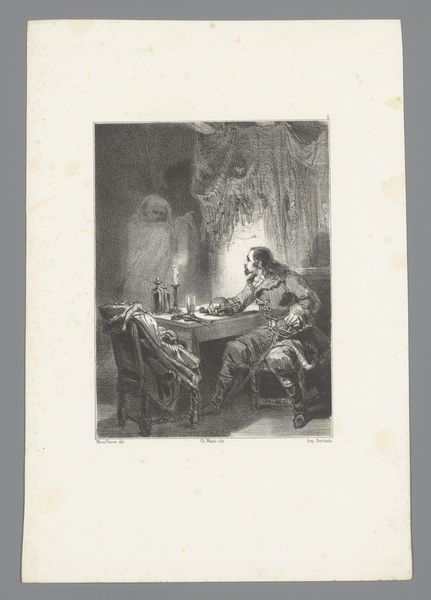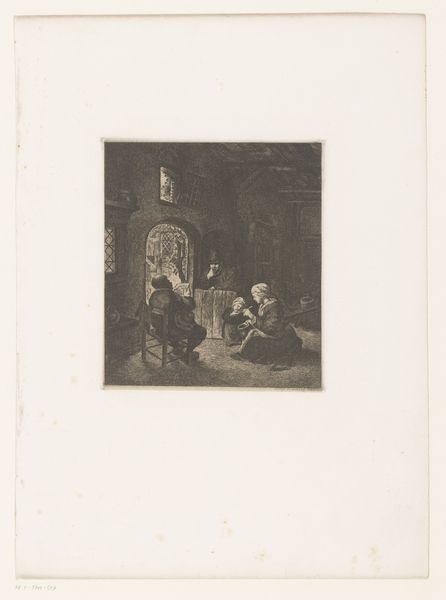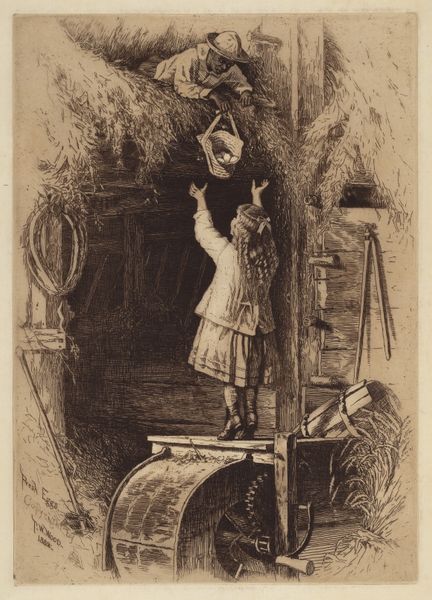
Keukenscène met een stilleven met haas, fruit, kan en glas 1829 - 1890
0:00
0:00
print, etching
# print
#
etching
#
genre-painting
#
realism
Dimensions: height 159 mm, width 119 mm
Copyright: Rijks Museum: Open Domain
Curator: The Rijksmuseum holds this intriguing print entitled "Keukenscène met een stilleven met haas, fruit, kan en glas" by Willem (I) Linnig, created sometime between 1829 and 1890. It's a genre painting rendered in etching, a stark, intimate scene. Editor: My first thought is one of domestic stillness, yet there’s an unease. The hanging hare suggests vulnerability and mortality, contrasting with the abundance of fruit on the table. Curator: Absolutely, the juxtaposition of abundance and mortality is key. The still life elements, carefully arranged, speak to the prosperous life, yet the hanging hare, a common motif in 17th and 18th-century Dutch art, serves as a "memento mori," a reminder of death's inevitability. This wasn't unusual imagery in a society deeply shaped by Calvinist beliefs. Editor: It's that constant dance, isn't it? Even within the realism, there's a didactic element. It evokes layers. Take the presence of glass, a frequent reminder of life’s fragility—and what is that pitcher next to it all about, then? Curator: The pitcher introduces a element of provision but think what liquid would be stored in it. Perhaps something that elevates life, or the reality of its pains, depending on the context or who owned the image. This realism movement was rising, of course, when this genre art piece was rendered, but as a black and white print, it certainly presents different weightings than if painted on canvas, which means that a moral and austere undertone might override any indication of domestic luxury in the still life that the genre is portraying. Editor: I’d agree that a black and white print, in this era of quickly rising new aesthetics, would necessarily carry symbolic intent. It’s all about how the symbolism intersects with cultural ideas of transience and the availability of bounty. Consider that kitchen, not as a place of work necessarily, but as a cultural marker loaded with ethical concerns, even if presented as a slice of reality. It may show realism but this only adds to the gravity of this setting that otherwise might go unnoticed if treated with different coloring. Curator: You are certainly correct. In these simple marks upon the page lies an invitation, wouldn’t you say, to explore themes of abundance and restraint through our ever evolving symbolic language, no? Editor: Precisely. We find new shades and insights with each careful look.
Comments
No comments
Be the first to comment and join the conversation on the ultimate creative platform.
